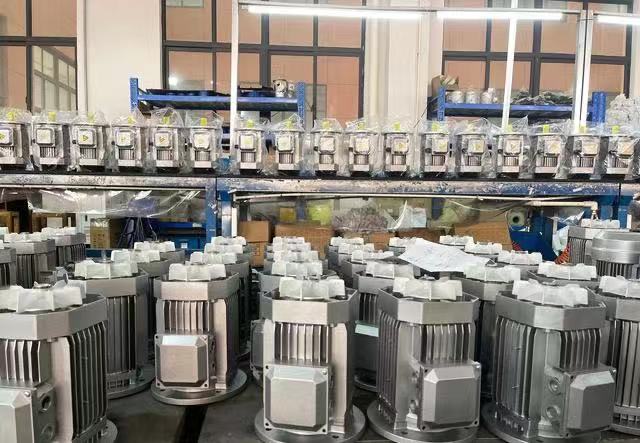Many people ask what the difference is between a synchronous motor and an asynchronous motor. In fact, the main difference between synchronous and asynchronous motors lies in whether the rotor speed is synchronized with the rotational speed of the stator’s magnetic field. If the rotor’s rotational speed matches that of the stator, it’s called a synchronous motor, whereas if they are not in sync, it’s called an asynchronous motor. In terms of performance parameters and applications, these two types of motors have significant distinctions. Let’s explore this further with Ningbo Kejin Electric Motors.
Table of Contents
1.Difference in Rotational Speed Between Synchronous and Asynchronous Motors
Asynchronous motors have AC current supplied to the stator, generating a rotating magnetic field. The rotor, induced by this field, creates its own magnetic field, causing it to rotate along with the stator’s magnetic field. The rotor rotates at a slower speed than the stator, resulting in slip, which is why it is referred to as an asynchronous motor.
Synchronous motors have a DC excitation winding on the rotor, requiring an external excitation power source and introducing current through slip rings. As a result, the rotor rotates in sync with the stator’s magnetic field, making it a synchronous motor.
2. Structural and Operational Differences Between Synchronous and Asynchronous Motors
The stator windings of synchronous and asynchronous motors are the same, with the primary difference lying in the rotor’s structure.
Synchronous motors feature a rotor with a DC excitation winding, necessitating an external excitation power source introduced through slip rings.
On the other hand, asynchronous motors have a short-circuited rotor winding that generates current through electromagnetic induction. They are simple, cost-effective, easy to install, use, and maintain, which is why they are widely used. However, they have lower efficiency, a lower power factor that is not favorable for the power grid. Synchronous motors, on the other hand, have higher efficiency, are suitable for capacitive loads, and can improve the power factor of the grid. They are commonly used in large industrial and mining applications.

